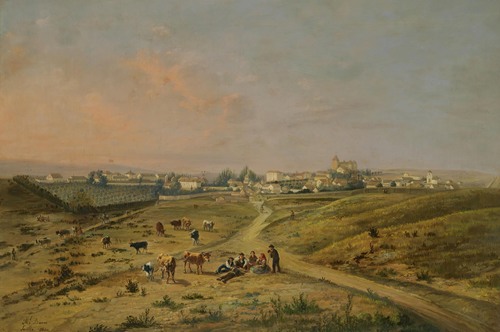

Manuel Barrón is hailed as the great master of Andalusian Romantic landscape painting. He started out as a pupil of the genre painter Antonio Cabral Bejarano (1798–1861), as well as studying from 1828 to 1835 at the Seville School of Fine Arts, where he would attain the post of assistant in 1841 and assistant director of the painting department in 1844.
Specialised in landscape paintings chiefly depicting Seville and its outskirts from his youth, Barrón was involved in the establishment of the city’s Liceo Artístico (Lyceum) in 1838, and became a member of the Academy of Fine Arts of his native city in 1851.
He participated regularly in the public exhibitions at the Lyceum from its establishment onwards, obtaining a silver medal at the exhibition in Jerez de la Frontera in 1862 for his painting Ganado vadeando un río (“Cattle crossing a River”). He took part in the 1864 National Exhibition of Fine Arts, entering works entitled Una posada del Huesúa junto a la fábrica del Pedroso (“Inn by the Huesúa, next to the Pedroso Factory”) and Vista de la campiña de Córdoba (“View of the Cordoba Countryside”). In 1862 he signed his splendid View of Seville from Triana Bridge (Patrimonio Nacional), one of his best known works which was acquired by Queen Isabella II that year during her visit to the city.
In 1872 he was appointed director of the Seville Academy of Fine Arts and remained in this post until his death on 15 January 1884.

